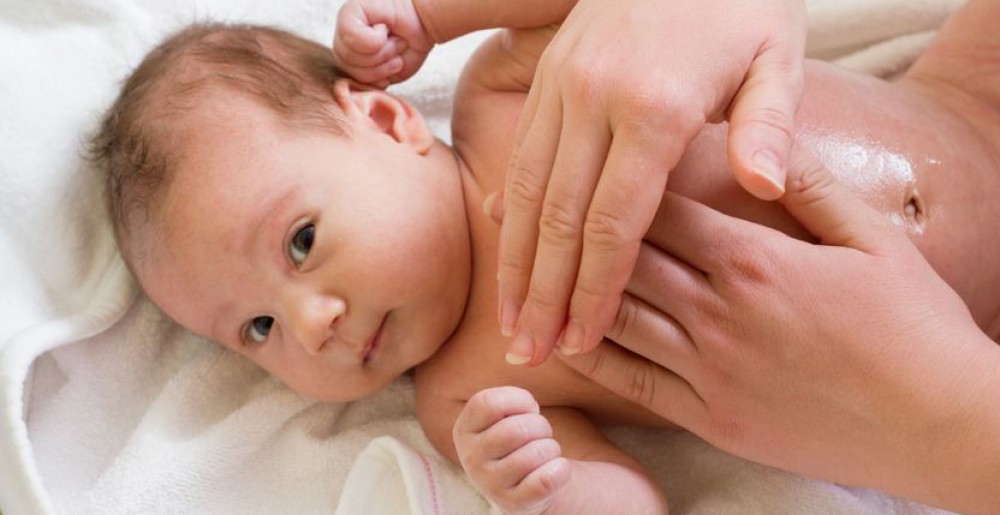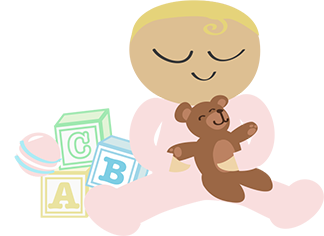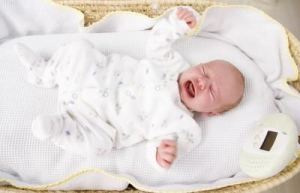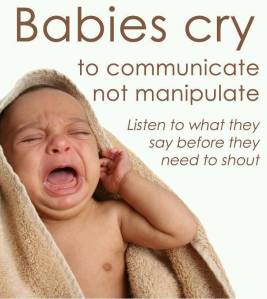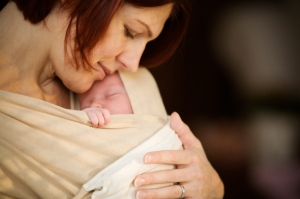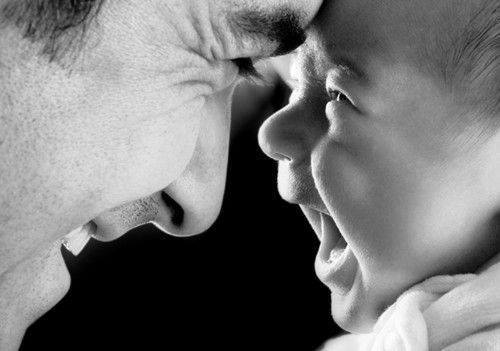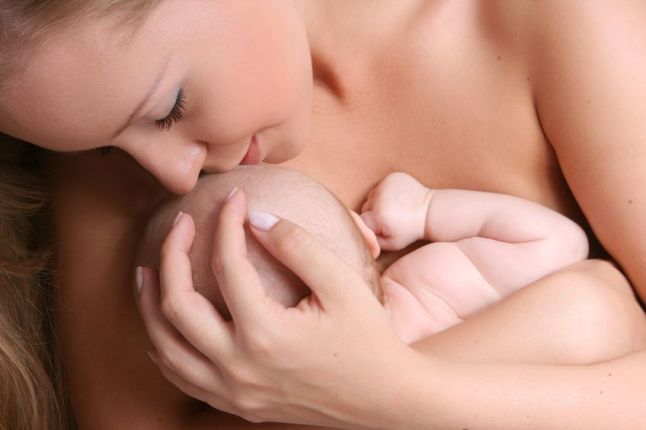Babies cry for many reasons, and it is important to learn your baby’s personality and his or her different cries so that you can respond to them. There are cries that mean, “I need affection,” “I’m hungry,” “I’m in pain,” “I’m uncomfortable,” “I’m tired and cranky and don’t know how to get to sleep,” and still others that are simply “venting” all the stress the baby takes in, adjusting to the world of non-stop stimulation.
Each cry can and should be responded to appropriately. Each baby will differ in his or her need for physical affection. Some need to be held nearly all the time for the first months before crawling. Others are curious and independent almost immediately. To force an infant one way or another is to disempower her and disrupt the flow of chi she needs to become strong, healthy, and independent.
Some people think that babies who cry always need to be calmed and shushed, or, conversely, should be left alone to cry it out. Neither is true. Infants should never be left alone to cry, unheeded, but sometimes they need to cry in the safety of a parent’s arms, without being shushed, to discharge stress. After a certain period, when they sense they are being attended to, they calm and usually sleep much more deeply.
To be responsive to your baby, read up on the art of “Active Listening.” When you talk to your baby with a listening heart, he or she knows it and you can see the quality of their cries change. Locking with you eye-to-eye, you will see your baby moving her mouth as if trying to speak.
This is one of the most important reasons for pregnant women to massage their bellies, and to massage their infants regularly after birth. You learn, as nothing else can teach you, what your baby needs, and his cries and fusses don’t distress you so much as inform you of what you need to do to respond appropriately and thus allow your baby to grow and blossom like a well-tended flower in your garden.
My book, Infant Massage, a Handbook for Loving Parents, was the first, comprehensive book to introduce infant massage to the West. The nonprofit organization I founded in 1979, the International Association of Infant Massage (IAIM), has instructors in 71 countries. You can find an instructor and take a class — a great way to learn, have your questions answered, and be with other parents who value the crucial “fourth-trimester” bonding process.
CREATING A SAFE AND RESPONSIVE ENVIRONMENT FOR YOUR BABY
If you respond in the right way, you needn’t worry about when to wean, when to potty train, and all the other advice people want to give you. You will become an expert on your child, and you will naturally know and understand what she is ready to do and when. This gives you the confidence to listen to the experts and then go by your inner sense of what is right.
If you want to create a transition environment for your baby that imitates aspects of the in utero experience, you may want to get a baby pack that keeps your infant close to your body so he can hear your heartbeat and feel your warmth, your breathing, your rhythms.
Some pastel organza material draped over the cradle, can soften the light. Putting a warm cap on her head when going outdoors will prevent heat from escaping from her head. A baby monitor can help alert you to your baby’s sounds when she is sleeping and you are in another room. Other aids include a heartbeat simulator for the baby’s cradle and setting the volume low on your stereo or television.
SLEEPING TOGETHER
Some parents want to try family co-sleeping, which is a much-debated practice, particularly in the U.S. We practiced family co-sleeping until my youngest was around five years old. After doing a lot of research on this subject, I have concluded that the tales of accidental suffocation by “overlying” are real, but seem to be related to parents who co-sleep for convenience, who don’t take the precaution of removing any fluffy items from the bed, and/or they smoke.
When and if obstetricians and pediatricians give any information to new parents, co-sleeping is roundly discouraged. Unless expecting and new parents take the time to research the subject and 1) prepare, 2) find out what is the very best way for families to sleep together with a newborn, parents will be frightened and reject the notion, not realizing that sleeping together can reduce parental sleep deprivation and infant fussiness, irritability, and crying.
Dr. James McKenna, Director of the Center for Behavioral Studies of Mother-Infant Sleep at Notre Dame University says, “It is a curious fact that in Western societies the practice of mothers, fathers, and infants sleeping together came to be thought of as strange, unhealthy, and dangerous. Western parents are taught that ‘co-sleeping’ will make the infant to dependent on them, or risk accidental suffocation. Such views are not supported by human experience worldwide.”
After having observed how families in India sleep together in a very small space, I wanted to do that with my family. This arrangement, in my experience, allowed me to breastfeed my babies without having to fully awaken. The warmth of my body, my heartbeat, and odor, was just right for them. We could respond quickly to cries, chokes, or other needs. The babies could nurse frequently, giving them more antibodies to fight disease and helping them transition from womb to room.
Dr. McKenna goes on to say, “Human infants need constant attention and contact with other human beings because they are unable to look after themselves. Unlike other mammals, they cannot keep themselves warm, move about, or feed themselves until relatively late in life. It is their extreme neurological immaturity at birth and slow maturation that makes the mother-infant relationship so important.”
Dr. John Medina, in his book Brain Rules for Baby, says, “During the attachment process, a baby’s brain intensely monitors the caregiving it receives. It is essentially asking such things as “Am I being touched? Am I being fed? Am I safe?” If the baby’s requirements are being fulfilled, the brain develops one way; if not, genetic instructions trigger it to develop in another way. It may be a bit disconcerting to realize, but infants have their parents’ behaviors in their sights virtually from the moment they come into this world. It is in their evolutionary best interests to do so, of course, which is another way of saying that they can’t help it. Babies have nowhere else to turn.”
One of my fondest memories is when we were sleeping with our little ones in a family bed. Once, in the middle of the night, my 18-month-old daughter awakened to nurse. She looked up into my face and patted my cheek. “I like you, Mommy, I like you,” she said, then closed her eyes to sleep with a sweet smile on her face. Every time I remember that moment my heart fills with love, joy, and gratitude that this child has come into my life. Now that she is an adult with her own little girl, I share these memories with her and it still has the effect of bringing us close.
Dr. McKenna agrees that these types of interaction are beneficial for both parents and infants. He says, “Studies have shown that separation of the mother and infant has adverse consequences. Anthropological considerations also suggest that separation between mother and infant should be minimal. Western societies must consider carefully how far and under what circumstances they want to push infants away from the loving and protective co-sleeping environment. Infants’ nutritional, emotional, and social needs, as well as maternal responses to them, have evolved in this environment for millennia.”
Often a baby’s crying can lead to and respond to marital discord. Dr. Medina goes on to say, “If the infant is marinated in safety— an emotionally stable home— the system will cook up beautifully. If not, normal stress-coping processes fail. The child is transformed into a state of high alert or a state of complete collapse. If the baby regularly experiences an angry, emotionally violent social environment, his vulnerable little stress responders turn hyper-reactive, a condition known as hyper-cortosolism. If the baby is exposed to severe neglect, like the Romanian orphans, the system becomes under-reactive, a condition known as hypo-cortisolism (hence, the blank stares). Life, to quote Bruce Springsteen, can seem like one long emergency.”
“Infants younger than 6 months old can usually detect that something is wrong. They can experience physiological changes— such as increases in blood pressure, heart rate, and stress hormones— just like adults. Some researchers claim they can assess the amount of fighting in a marriage simply by taking a 24-hour urine sample of the baby. Babies and small children don’t always understand the content of a fight, but they are very aware that something is wrong.”
Some parents reject co-sleeping because they are concerned about its impact on their sex lives. We found other rooms in the house suited quite nicely. This may not be an option everyone chooses, but I encourage you to read up on it before deciding. It can contribute immensely to the well-being of your whole family. My favorite book on the subject is The Family Bed by Tine Thevenin. I very much recommend Dr. Medina’s book, Brain Rules for Baby: How to Raise a Smart and Happy Child from Zero to Five.
Purchase Infant Massage, a Handbook for Loving Parents:
http://www.amazon.com/Vimala-Schneider-McClure-Infant-Massage–Revised/dp/B00N4EKZJK/ref=sr_1_2?s=books&ie=UTF8&qid=1438282581&sr=1-2&keywords=infant+massage+a+handbook+for+loving+parents+by+vimala+schneider+mcclure
Find an infant massage instructor in the U.S.:
http://www.infantmassageusa.org
